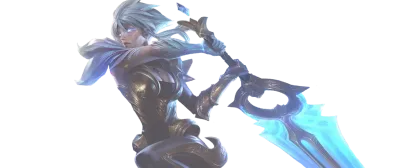What Is CT in Valorant and What Does It Mean?
💡 CT Meaning in Valorant
- CT in Valorant refers to the defending team or their spawn area, standing for “Counter-Terrorist.” It’s a term borrowed from Counter-Strike, used to quickly identify the team protecting the spike sites or areas typically held by defenders.
Today, we’re decoding a term that’s constantly buzzing through comms in every match: CT. If you’ve ever wondered why your teammates are shouting about “CTs” in a game without actual counter-terrorists, you’re in for a treat. Let’s dive into this linguistic leftover and see how it shapes the way we talk about Valorant!
What Does CT Mean In Valorant?
In Valorant, CT stands for “Counter-Terrorist,” but here’s the twist – there are no actual counter-terrorists in the game! Instead, it’s used to refer to the defending team or their spawn area. It’s the team trying to prevent the spike from being planted (or defuse it if it is), regardless of which specific agents they’re using.
When players say “CT,” they might be referring to:
- The defending team in general
- The spawn area of the defending team
- Areas of the map typically held by defenders
For example, “They’re rotating CT” means the attackers are moving towards the defenders’ spawn, while “CT is clear” might mean the defender-sided areas of a site are free of enemies.
Where Did The Term Originate From?
The term CT is a linguistic hand-me-down from Counter-Strike, one of the most influential tactical shooters of all time. In Counter-Strike, teams are literally divided into Terrorists (T) and Counter-Terrorists (CT).
When Valorant launched, many players came from a Counter-Strike background. They brought their vocabulary with them, including “CT” for defenders and “T” for attackers. The terms stuck, even though Valorant’s lore doesn’t include terrorists or counter-terrorists.
This carryover of terms is common in gaming. Just as many people still say “tape” for digital recordings, the FPS community held onto “CT” because it was quick, easy, and everyone understood it.
How To Use The Term Correctly?
Using “CT” correctly in Valorant is all about context. Here are some tips:
- Team Reference: “CT” can refer to the defending team. “CT is eco” means the defenders are on a low-budget round.
- Position Callouts: Use “CT” to indicate defender-favored positions. “Watching CT” often means guarding the path from defender spawn.
- Rotations: “Rotating CT” typically means moving through the defender’s spawn area to another site.
- Map Control: “CT control” suggests the attacking team has taken over areas usually held by defenders.
- Post-Plant Situations: After the spike is planted, “CTs” refers to the remaining defenders trying to retake the site.
- Economy Discussions: “CT economy” talks about the defending team’s financial situation.
NOTE:
Remember, while “CT” is widely understood, Valorant’s official terms are “Attackers” and “Defenders.” In more formal settings or with newer players, these official terms might be clearer.
Other Related Terms
When discussing CTs in Valorant, you might encounter these related terms:
- T Side: Short for Terrorist side, used to refer to the attacking team.
- A Site/B Site: The main areas where the spike can be planted.
- Mid: The middle area of the map, often crucial for rotations.
- Heaven: An elevated position overlooking a site, often held by CTs.
- Hell: A position below Heaven, can be used by both CTs and Ts.
- Rotate: Moving from one area of the map to another, often through CT spawn.
- Lurk: A strategy where one player (often a T) stays behind to catch rotating CTs.
- Retake: When CTs attempt to reclaim a site after the spike is planted.
- Default: A standard defensive setup for CTs at the start of a round.
- Cross: The act of moving across an open area, often dangerous for CTs rotating between sites.
- Flank: An attack from behind, which CTs might do through T spawn.
- One-and-Done: A defensive position that’s good for one kill but hard to retreat from, often used by CTs.
There you have it, linguistic legends and callout connoisseurs! You’re now fluent in the art of “CT” in Valorant. Remember, clear communication is key in tactical shooters, so whether you’re calling out “CTs rotating” or “Defenders on the move,” what matters most is that your team understands you. Valorant might not have actual counter-terrorists, but the spirit of quick, efficient callouts lives on in every “CT” uttered across Haven, Bind, and beyond. Now get out there, watch those CT crosses, and may your comms be as crisp as your aim!





![Tabletop Gamers Crave More Play, But Life Keeps Getting in the Way [Infographic]](https://gametree.me/wp-content/uploads/2025/07/tabletop-infographic-thumb-statistics-300x126.png)









